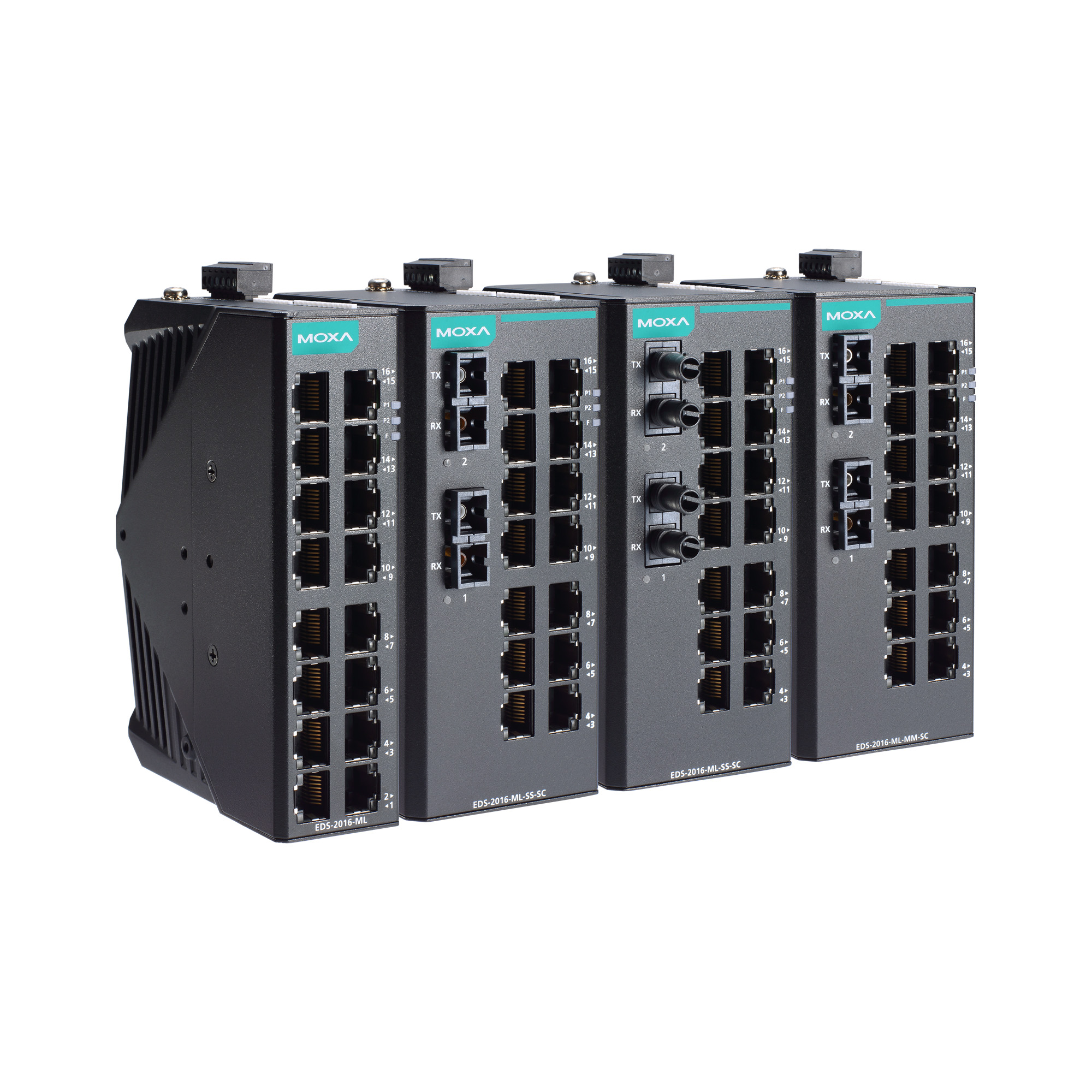
Click “WhatsApp Us” or “Get a Quote” above to buy EDS-2016-ML Series from APulsar Technologies, MOXA official distributor.
In stock (EDS-2016-ML only). Purchase walk-in from our office in Petaling Jaya, or order online and enjoy fast delivery across Kuala Lumpur and the entire Malaysia.
The EDS-2016-ML Series industrial Ethernet switches offer up to 16 10/100M copper ports. You can also choose models with 14 copper ports and two optical fiber ports. The fiber ports feature SC/ST connector types. These switches provide ideal solutions for applications requiring flexible industrial Ethernet connections.
The switches deliver greater versatility across different industries. Users can enable or disable key functions using DIP switches on the outer panel. These functions include Quality of Service (QoS), broadcast storm protection, and port break alarm capabilities.
In addition to its compact size, the EDS-2016-ML Series features 12/24/48 VDC redundant power inputs, DIN-rail mounting, high-level EMI/EMC capability, and an operating temperature range of -10 to 60°C with -40 to 75°C wide temperature models available. The switch has also passed a 100% burn-in test to ensure it will function reliably in the field.
| 100BaseFX | |||||
| Multi-Mode | Single-Mode (40 km) | Single-Mode (80 km) | |||
| Fiber Cable Type | OM1 | 50/125 µm | G.652 | G.652 | |
| 800 MHz x km | |||||
| Typical Distance | 4 km | 5 km | 40 km | 80 km | |
| Wavelength | Typical (nm) | 1300 | 1310 | 1550 | |
| TX Range (nm) | 1260 to 1360 | 1280 to 1340 | 1530 to 1570 | ||
| RX Range (nm) | 1100 to 1600 | 1100 to 1600 | 1100 to 1600 | ||
| Optical Power | TX Range (dBm) | -10 to -20 | 0 to -5 | 0 to -5 | |
| RX Range (dBm) | -3 to -32 | -3 to -34 | -3 to -34 | ||
| Link Budget (dB) | 12 | 29 | 29 | ||
| Dispersion Penalty (dB) | 3 | 1 | 1 | ||
| Note: When connecting a single-mode fiber transceiver, we recommend using an attenuator to prevent damage caused by excessive optical power. Note: Compute the “typical distance” of a specific fiber transceiver as follows: Link budget (dB) > dispersion penalty (dB) + total link loss (dB). |
|||||
Apulsar.com uses cookies to ensure you get the best experience. By continuing to browse, you agree to our use of cookies. Our privacy policy available here